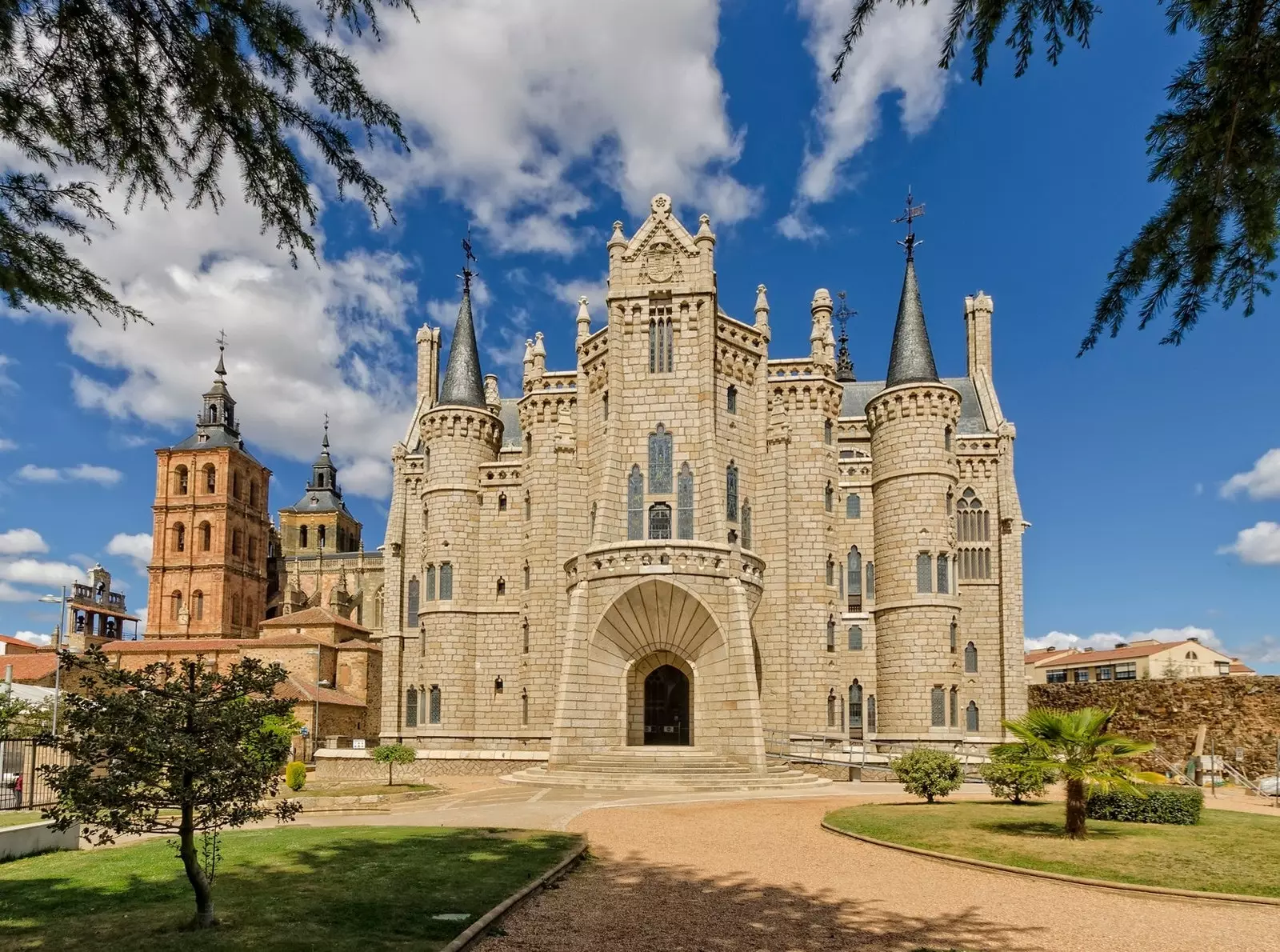
Episcopal Palace of Astorga with the cathedral in the background.
"Not even in a balloon would I cross that city again," they say Antonio Gaudí said about Astorga. In 1889 he had begun the construction works of the Episcopal Palace and, due to disagreements with the Astorgan Diocese, the Catalan ended up abandoning the project, which would remain unfinished until many years later.
The truth is by León the genius of Reus had not been treated very fairly, whose innovative and original construction techniques were constantly criticized (including those of the Palacio de Botines in the capital) both by public opinion and by the local architects, who believed that both modernist buildings were “out of tune” with their surroundings. An aesthetic and constructive decontextualization with which we not only agree, but we are forced to praise, since, thanks to this transgressive and revolutionary way of understanding architecture, today the people of Leon can boast of owning two impressive neo-Gothic buildings by Gaudí that many other cities in the world would like for themselves.
For this reason, the Palacio de Gaudí, built with granite from Bierzo with the appearance of a castle, is a must-see (it houses the Museo de los Caminos) in this two-thousand-year-old city born as a Roman military camp. However, it is not the only attraction of what was one of the most important communicative centers in northern Spain during the Middle Ages. being the crossroads between the Camino de Santiago and the Vía de la Plata and natural gateway to Galicia.
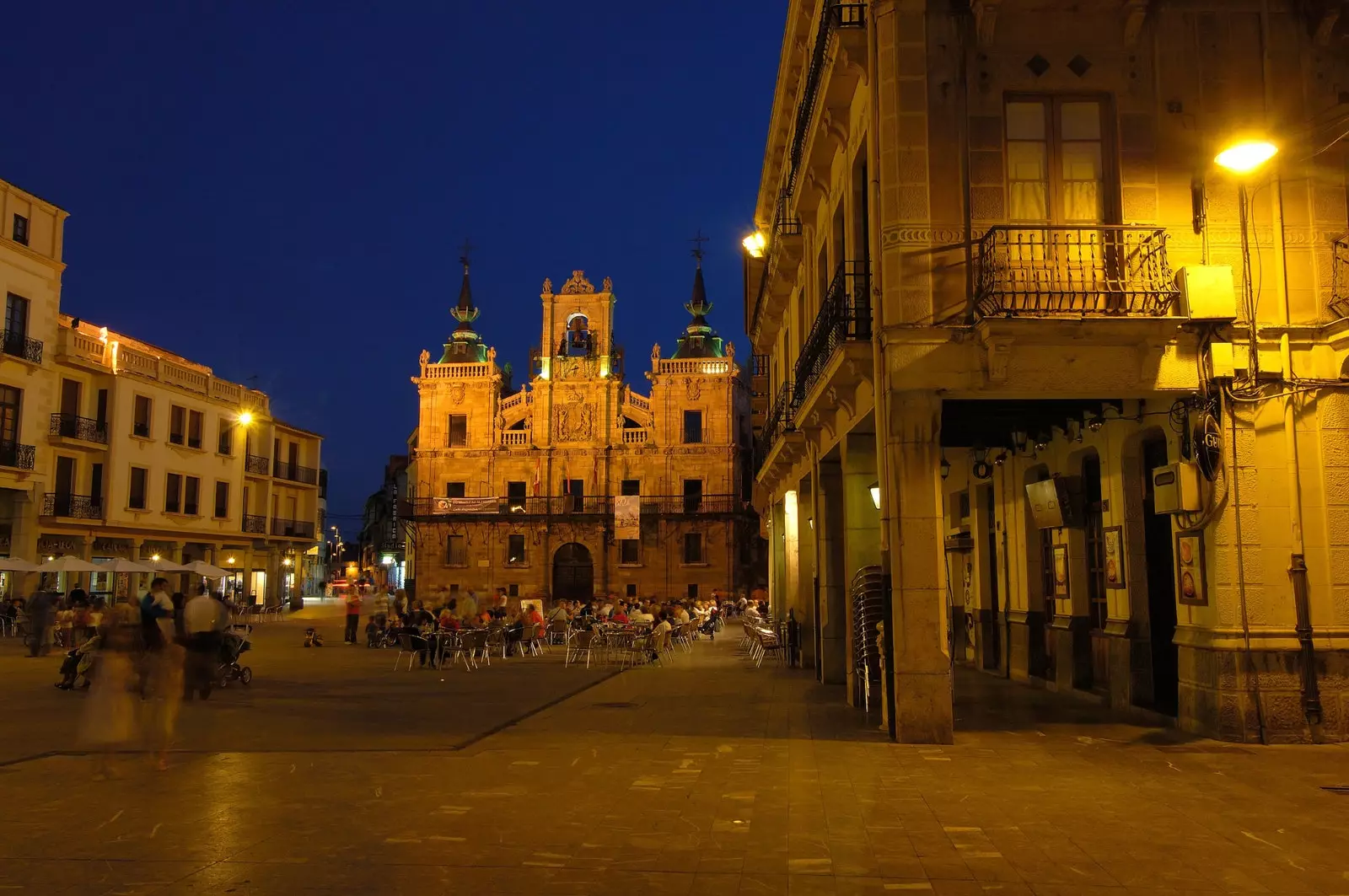
Town Hall (from the 17th century) and the Plaza Mayor of Astorga, León.
ROMAN PAST
It starts from the Roman Museum – where tombstones, Pompeian paintings, jewels and coins are exhibited, as well as other objects recovered by archaeological excavations – the Roman Route that stops at the different vestiges of Asturica Augusta, born in the 1st century AD. over the camp of the Legio X Gemina (whose legionary fence has also been discovered): the Ergastula, a large vaulted gallery in the forum, the Lesser Baths, the Aedes Augusti temple, the vaulted galleries of the sewers and the Roman Domus, a luxurious house dating from the 1st century AD. and IV AD The latter, which contains the mosaic of the bear and the birds dedicated to Orpheus, is free to visit, as are the first walls and the Roman gate, next to the cathedral.
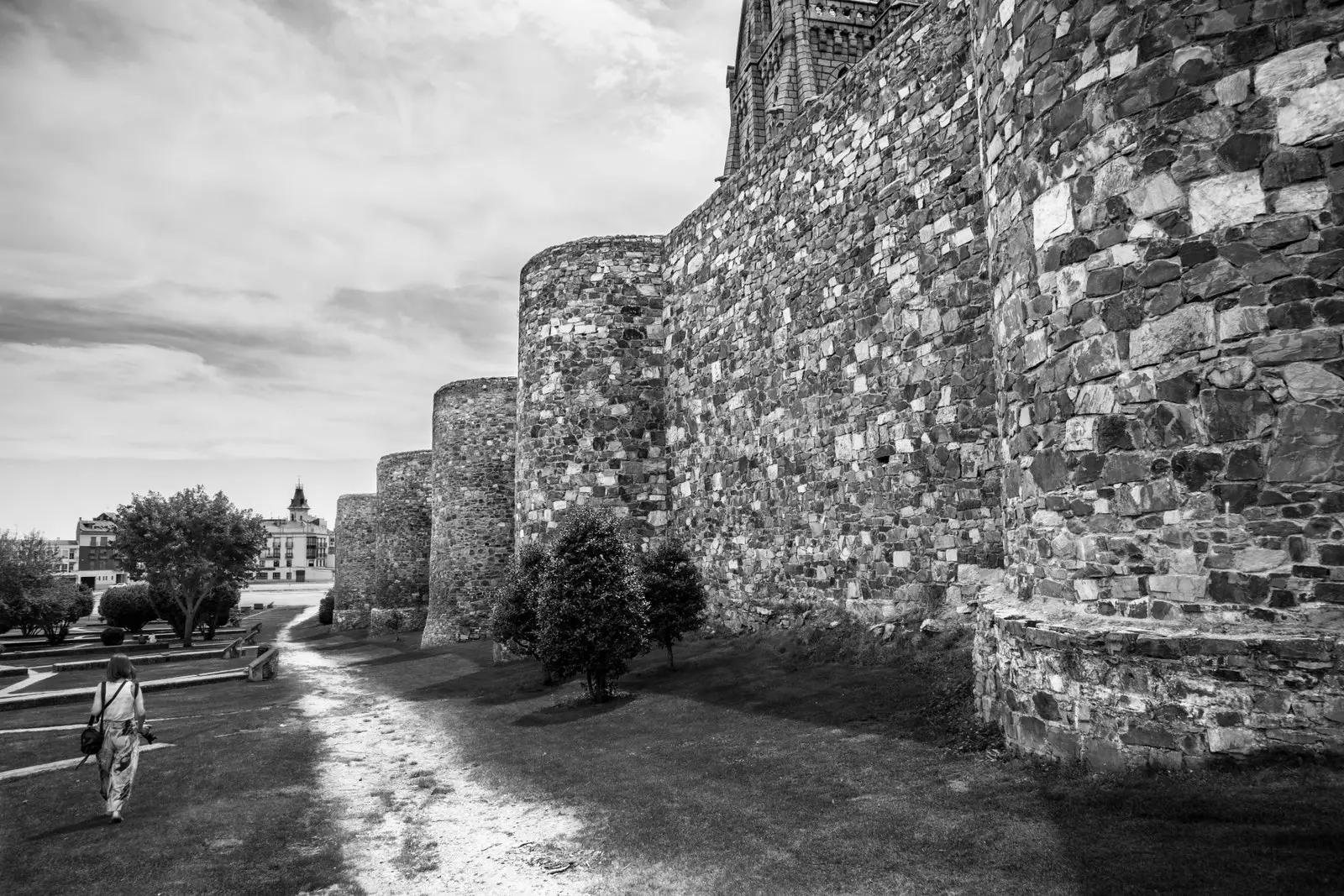
Remains of the Roman walls of Astorga.
CROSSROAD
They affirm from Turismo de Astorga that the Camino Frances de Santiago and the Vía de la Plata originated from two Roman roads that connected Asturica Augusta with the rest of the peninsula and with Rome itself. And they are not exaggerating, since originally the first itinerary mentioned linked the Leonese city with Bordeaux (in Aquitaine) and the second did the same with Mérida (Emerita Augusta). Even the cross-border Via Romana XIX, described in the Antonine Itinerary from the time of Augustus, connected it with the Portuguese city of Braga (Bracara Augusta). It is as if all the roads of the peninsula lead to Astorga (sorry, this exaggeration is my thing).
the pilgrim access Astorga through the Puerta Sol and leave it through the Puerta Obispo, leaving behind relevant points of interest such as the church of San Francisco and the convent of the Redemptorist Fathers, the Town Hall (from the 17th century) and the Plaza Mayor, the Cathedral of Santa María (gothic, renaissance, baroque and neoclassical at the same time) and its Cathedral Museum, the hospital of San Juan Bautista and its neoclassical façade or the house of the poet Leopoldo Panero, a member of the brief Generation of 36 who, although he belonged to the poetry rooted in affinity with the regime, had no qualms about praising Unamuno or Federico García Lorca:
No prophetic voice, cut / by the ax, is extinguished or has been extinguished; / She is not buried in Federico either.
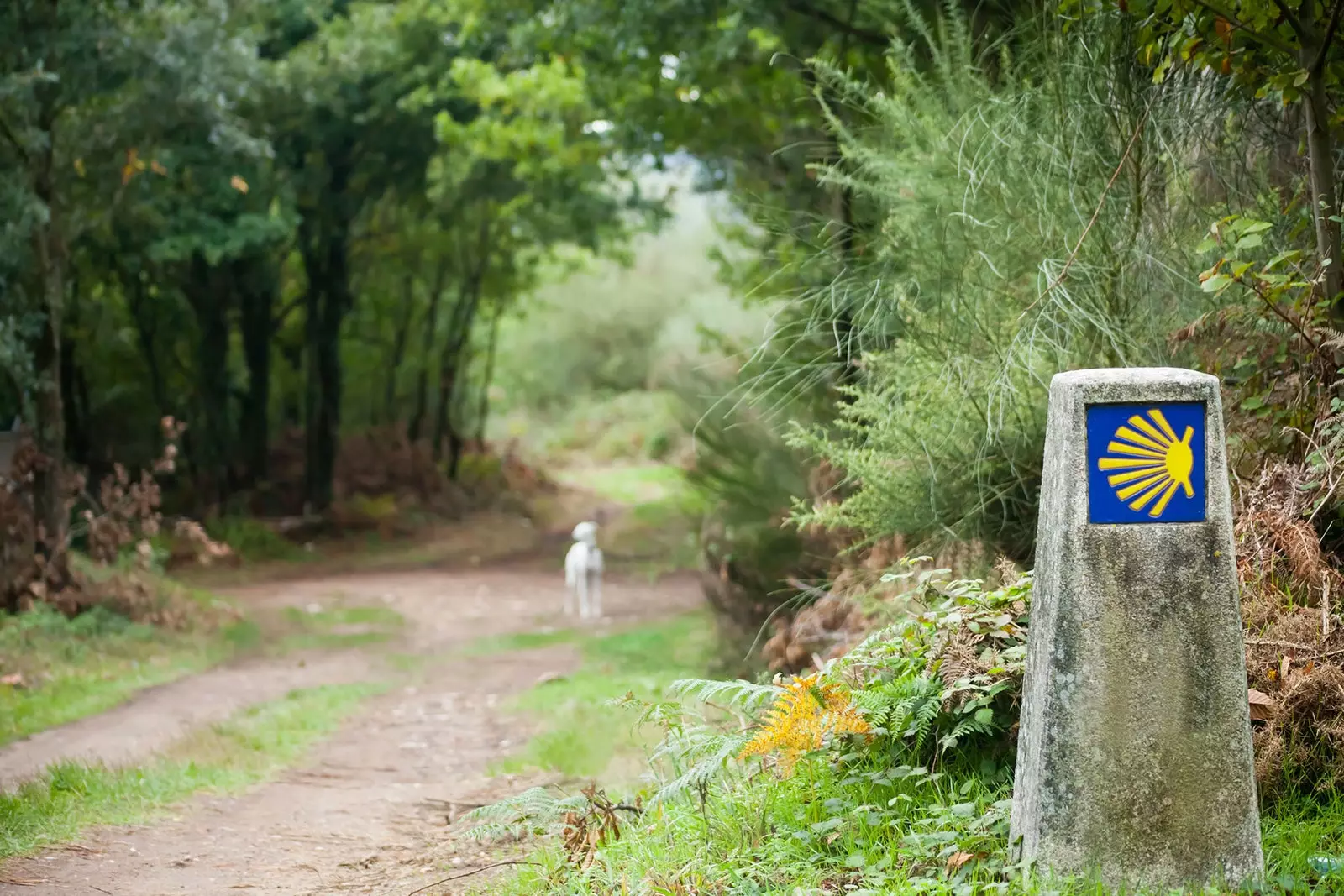
The Camino Frances de Santiago originated from the Roman road that connected Asturica Augusta with Aquitania.
NAPOLEONIC ROUTE AND URBAN ART
It was in 2019 when the Astorga City Council presented the application for mobile phones and tablets of the Napoleonic Route that tour more than a dozen Astorgan historical enclaves related to the War of Independence: Plaza Eduardo de Castro and the plaque in memory of the Marquis de la Romana and the infantrymen, cavalrymen and volunteers who defended the city; the monument to the Sites in the Plaza Santocildes or the San Juan Hospital, where Napoleon Bonaparte was received by the bishop (and despised by the Astorgans), among others.
Also about the Napoleonic war deals with one of the last urban art murals that empower, beautify and contemporize the city. It is the work of Leon David Esteban (better known as Dados puntocero), it measures more than 300 square meters and you will find it on Los Sitios street. It is not the only project in the city of the artist DA2.0, who had previously used (and very successfully) the walls of Astorga as an escape to show its history and traditions through colorful graffiti: see that of the Mantecadas Cajilleras (copy of a 1927 photo showing the women who were in charge of filling the boxes of the famous Astorganas mantecadas), that of the cecina in Pío Gullón street (in which a realistic 'countryman' appears tasting typical products of the area) and that of the Plaza de la Semana Santa, his first commission for the city.
THE ASTORGA MARAGATA
It is controversial to affirm that Astorga is the capital of the Maragatería, since in principle It would have been the maragato muleteers of the old Somoza who would have given the name to the region. In fact, the patron saint of the maragatos, Our Lady the Virgin of Remedies, is in Luyego de Somoza. This does not mean that the city, where muleteering was also an important economic pillar between the 16th and 19th centuries, is considered as one of the seven municipalities that make up the current administrative space known as La Maragatería: Astorga, Brazuelo, Lucillo, Luyego, Santa Colomba de Somoza, Santiagomillas and El Val de San Lorenzo.
Proof of this shared past with the rest of the towns on the eastern slope of the Montes de León can be found in Astorga Town Hall, a typical Leonese civil baroque building. Specifically in the automatic clock of the central belfry, in which a couple dressed in the traditional maragato suit tells the time. They are Juan Zancuda and Colasa, both currently made of aluminium, since the 1804 clock made of wood by Bartolomé Fernández, also the author of the Astorga cathedral clock, was replaced by an automatic one in the 1970s. The mechanical clock of automata, the second to crown the building (since there was originally a previous one from the mid-18th century), Rest now restoring in the Time Museum of Astorga.
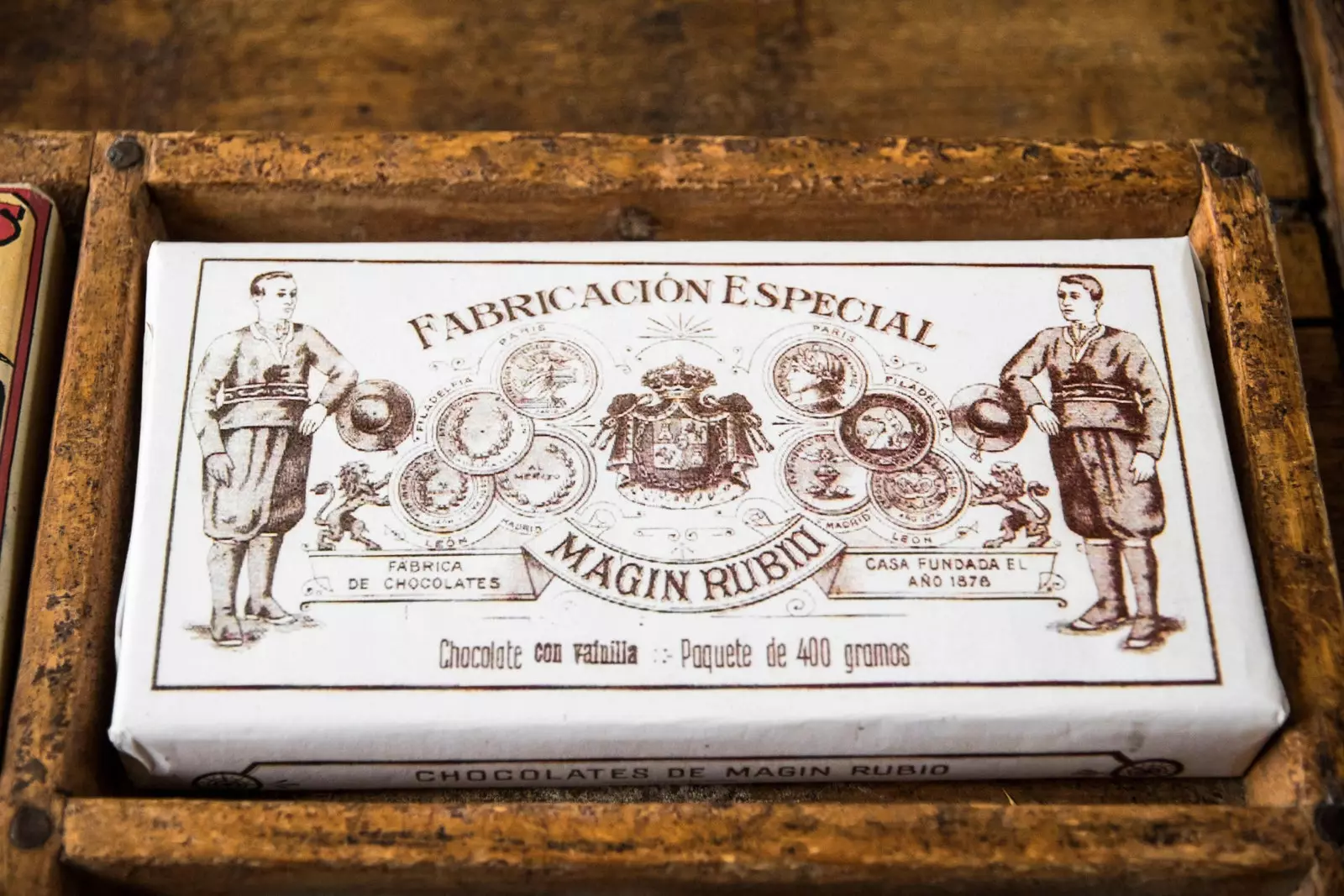
Lithograph with which Magin Rubio Chocolate was labeled, in the Astorga Chocolate Museum.
Another place not to be missed is the Chocolate Museum, since we must not forget that at the beginning of the last century in Astorga there were almost fifty chocolate factories, such as the one that today houses this interpretive center (Avd. de la Estación, 16) in which to learn from the origin of cocoa to the lithographs with which families of Astorgan chocolatiers labeled and traded the tablets (some were distributors of the Royal House).
And as a climax, a cooked maragato, which begins with the meat (of seven types), continues with the chickpeas with pico de pardal accompanied by potatoes and cabbage and ends with the soup. Well, it's over completely... no, because it is tradition to crown the meal with homemade custard. Although it is true that the most famous in Maragatería is the one in the nearby town of Castrillo de los Polvazares, in Astorga there are also good restaurants where you can try this typical specialty, such as Las Termas, La Peseta or El Serrano.
